The great man has retired from competition, not only will the showjumping arena be poorer for his absence, but his retirement is a blow for journalists, since Ludger Beerbaum is a great interview – Christopher Hector
For example sit, in while I chat to him at Doha…
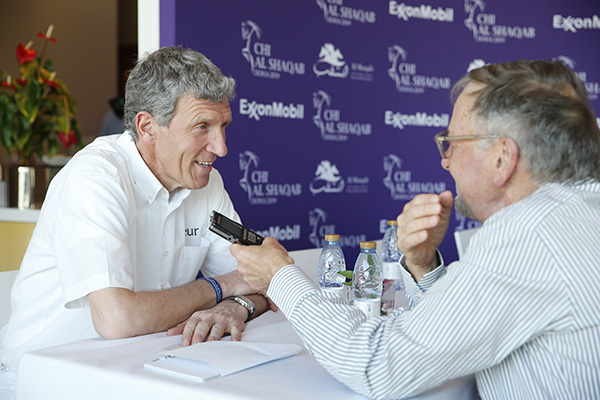
It was no surprise to find Ludger in Doha since he is very involved with riders from new jumping nations…
“I have been involved with China, lately Saudi Arabia, a Japanese boy is with me for more than ten years, I trained a couple of the Emirates riders.”
How do you see the future developing with these new countries?
“It’s a little bit parallel to what’s happening in the rest of the world – globalisation – the sport is definitely expanding and whereas twenty years ago it was mainly focused on Western Europe, since then equestrian sport has developed in a lot of other countries, Middle East, Far East, Asia, but also in Eastern Europe, a lot of new countries are taking off, getting to the top, step by step. They need a bit of time to get the fundamentals really set up and consistent but there is no question, when you see today’s showjumping world it is so international, and that is a definite change.”
But it is a funny sort of change isn’t it, change from the top, starting with elite horses and elite competition, rather than building from a base like you had in Germany, of local riding clubs, farmer’s sons riding the family horses…
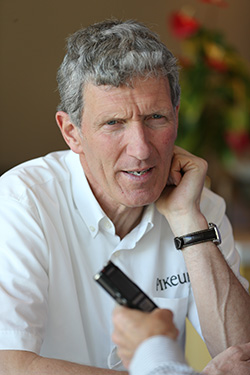
“That is absolutely true… I don’t know, today time is a massive factor. In the old days everything was going more slowly, everything had time to develop and get going and basics were very important, including the breeding, in our countries, Holland, France, Germany, Belgium.”
“In the new countries they don’t really have breeding, they start, as you said, at the top, and then it slowly goes down, when they realise that there is a need for basic knowledge. But everything now is a little bit like this today – when we started to have mobile phones, and the internet, everyone thought, now we will have so much more time because everything is so much quicker, but that didn’t really happen – we have less time. Everyone is in a hustle and a rush, so it is a little bit of that. Then the newer countries, once they have a smell of having the opportunity to be successful, they want to get it quick done, but, of course, I think to stay at the top, and have a long lasting thing, then you need the fundamentals and the basics also, and they are, in some areas, aware of it and start to work on the basics.”
Do you think we’ve lost something in showjumping now that it is so much about money, and big, and fast? Once upon a time, there was more time, less rush…
“Yes, definitely, but is this a question about our sport, or about life in general? First I would say it is about life, it is completely crazy, with all this internet and social media, the world is going crazy, every single minute there is something new, this for sure is changing the society and the people’s social skills and activities. It’s probably because I am still of the older generation, perhaps I’m not the one to ask, if you talk to my kids they say, oh Daddy don’t worry!”
“I had a very nice time in the old days when we had time to sit in the corner and play cards for hours. I think we would still have the time if we could switch the phones off. It’s a little bit crazy.”
Back then too, there were such different courses at different shows, Aachen had the hedges, Dublin, banks, now the courses are becoming standardised to take care of riders that are not so experienced, every course looks like the course at the last show, looks like the course at the next show…
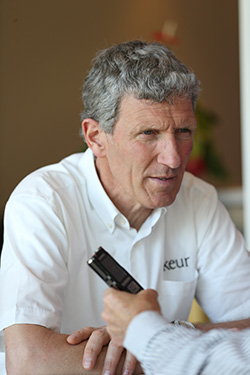
“For sure there is less variety, I agree, but is it because of weaker riders or is it because at the top we have so many more top riders and horses? If we were still jumping these old heavy material fences, hedges and banks, we would have 90% clear rounds.”
“If you look at the Grand Prix of Aachen today, from forty, there are thirty able to win on the day – twenty five years ago there were three or four able to win, the rest were just trying somehow to survive. I think the changes are more because of that, than because we have so many weak riders. At Aachen, we don’t have weak riders in the Grand Prix, maybe in some of the smaller classes. Every year there are a few there for the experience and maybe to get their country focused on the event for the future. But in the top sport I think this change to more uniformity is more because it has to be a bit more delicate and technical to separate the top riders.”
You are no longer available for the German team, is the young man, Christian Kukuk, being groomed to take your place, is he the new Ludger…
“I don’t know, he works with me, but there is also Philipp Weishaupt, he has been very successful, won Aachen, won Calgary, and he is also ten years older than Christian. Christian is a super guy and I think he has all the possibilities and all the talent to do a great job.”

Christian and Colestus at Doha
Not so bad to get the ride on Mrs Winter-Schulze’s stallion, Colestus, when you are 29 and starting out your career…
“Sure, but you have to prove that you are good, you don’t get that ride by luck, there has to be a reason – he rides very well.”
Who was the first really good Grand Prix horse that you sat on?
“Oh la la…! Actually my first horse when I was a Junior, I ended up making the Europeans for Young Riders, that was sort of Grand Prix, I would say two-star today. I got her by chance from a neighbour, she was the one to make me believe that I could do it, that I could make it to the top. Looking back this was the horse with the most influence.”
Her name?
“You may not believe it, it breaks your tongue when you spell it, but in German it means ‘competitiveness’ and it was true. I think the name was given when she was a yearling, there was no plan behind it, but it was a good name.”
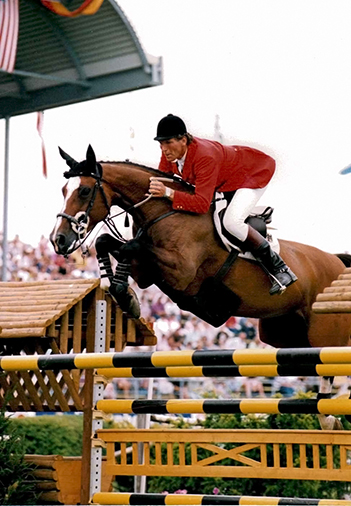
Classic Touch at Aachen
You’ve ridden so many fantastic horses, was there one that was the greatest of them all?
“It is so difficult in my situation, everyone has the horse of their lifetime but I want to be careful with that because I’ve had so many good ones. Should I really make a difference between Ratina, or Goldfever or Classic Touch – I don’t really want to do this because they have all been very very good and I don’t want to do this because they were so good at the time. In terms of winning, Goldfever is probably the one in terms of championship results, maybe Ratina, but I wouldn’t really say, this is the one.”
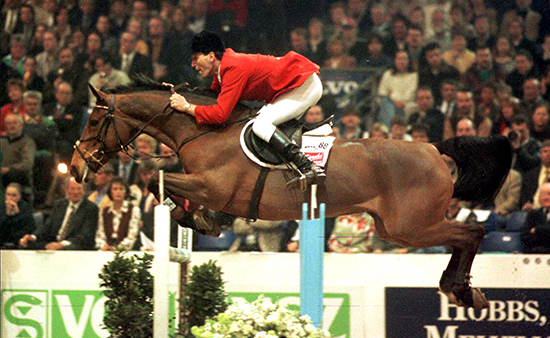
The hot little mare, Ratina
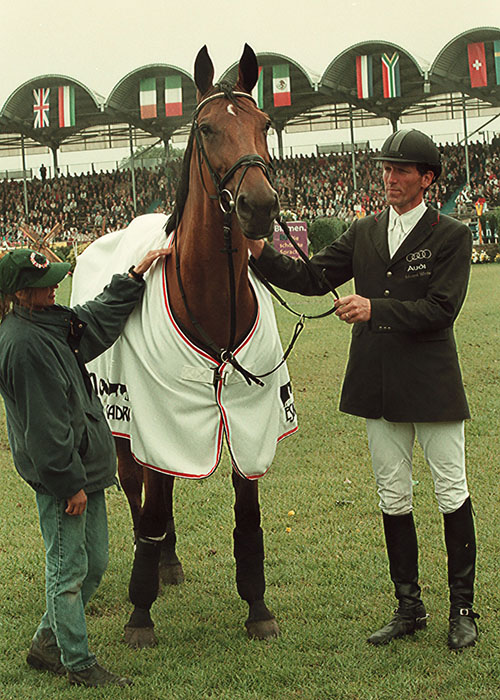
Ratina retires at Aachen
Were they similar?
“No, completely different, they could not be more different. Ratina was a hot, small mare, a heart as big as her body, whereas Goldfever was a stallion, a bit of a macho type, strong and solid and also in a way, always wanted to be dominated. Ratina was the other way around, I had to adapt myself 100% to her, if I was to try and tell her, she wouldn’t like that and wouldn’t jump as good.”
“Goldfever was so good on a straight line, you could go 100 kilometres straight to the fence and he would know how to jump them, whereas with Ratina always on the straight line you had to be a little bit careful or she became too quick, but in the turns she was unbelievable, to jump a big big fence out of two strides, was no problem to her, whereas Goldfever always needed a bit wider turn. They were really different.”
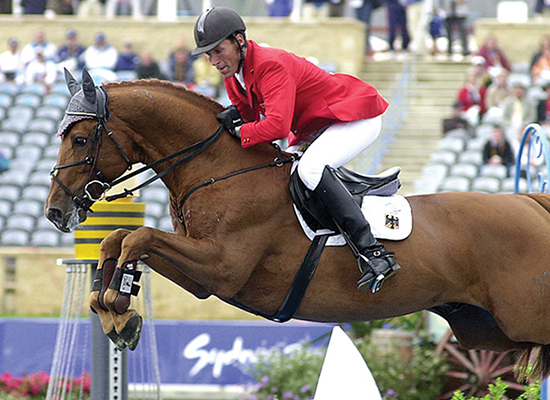
The macho – Goldfever
Is that one of your strengths, that you are able to adapt to the horses you are riding?
“Maybe, I think being at the top for such a long time, you have to be a bit flexible, whether you want to or not. Over the time, and with the experience of doing it, you realise that you have to find a way for every single horse. Of course you have to have your red line into everything but in the end it is very personal, the connection, and I think every horse is different.”
Where did your red line come from? Who were the most important teachers?
“I think it started when I was young. I started in the local riding club and before you even thought of going to a show it was important to have an accurate position, to give the right aids, and you did that for two or three years before we even thought about going to the competition. That is quite important for everything, a horse that is well trained in the basics is longer lasting than the one that you go quickly with, find the right bit and kick and go. It was in my favour to go through this period of education in the beginning.”
I find it amazing that people talk about the heavy German style, but I look at photos of Hans Gunter Winkler, and he rides light, his hands are beautiful – and you don’t ride in a heavy style…
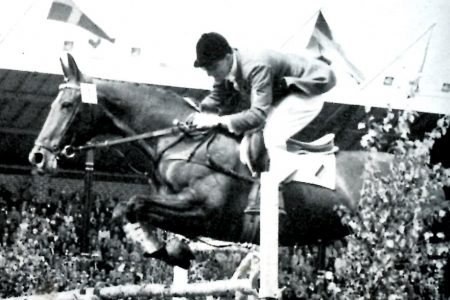
“No, I don’t but you have to be careful, for sure there are some Germans riding stronger, the martingale short, in the old days, like Thiedermann or Alwin Schockemöhle, but with the years and the breeding changing a little bit to more blood horses, they had to adjust a little bit, the martingale got longer, the head came up a bit, and they ended up being more forward.”
Do you think the riding has improved?
“Definitely. The riding has improved everywhere, also in the traditional countries. The maintenance, what we call horsemanship, the farriers, it is definitely improved, a lot. It had to improve, in the old days, they just got one bute and we kept going, whether the shoe was right or not right. Now there is zero tolerance and we have to be very accurate in everything.”
Are we in danger of losing the basics and everything is just quick, quick?
long pause, then…
“Probably, I don’t like to give you the answer, yes, but if I am really honest, and if I really look at everything, then this is something we have to point out, and make sure we have to start with the basics. Even in the old traditional countries, also in my country, the local riding clubs are getting less and less and the private riding stables, more and more, get the pony ready and they can’t sit on the horses properly and two months later they go to a show. This is not good.”
Putting on your horse breeding cap – did the WFFS affect you much?
“Until now, not at all, maybe because of luck we only had one stallion. We are talking about a millionth of a chance that the foals have a defect. I think the debate is hotter than the reality.”
Would you breed a mare to a stallion who was positive?
“If I knew the mare was fine, I would, with a mare with the gene, then I wouldn’t. Now we will test our mares, we didn’t do it in the past.”
Where do you see jumping breeding going in terms of the bloodlines, the style of horse…
“We are for sure breeding more and more light horses, blood horses. Everything gets a bit more technical and fine and delicate, but this have been the case for the last twenty-five years, I think it will probably go another step or two. For sure there is a limit at some point, as long as there are guys like me who are quite tall and still ride, we cannot go too far with the Thoroughbred breeding.”
“Also what I think could affect the sport, and long term the breeding, is the decision that from 2020 on, we are not allowed to use any hind boots. For sure this is a relief for the course builders and the well-educated and natural and strong, good jumping, powerful jumping horse, is going to be at an advantage, which should be the case. I am relaxed about it, in ten, fifteen years, we will have the opportunity to watch good sport.”
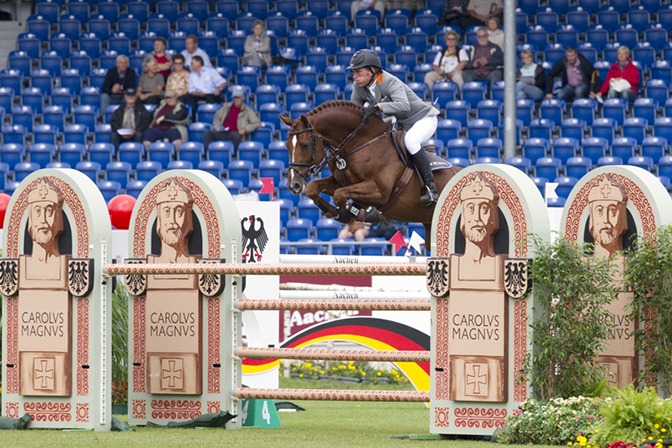
Zinedine
What stallions are you using this season?
“I have a couple of stallions, one of my favorites from the older stallions is Zinedine, by Guidam, Heartbreaker, he breeds really well with all types of mares, the progeny all have a very positive attitude and a lot of energy, and they are careful.”
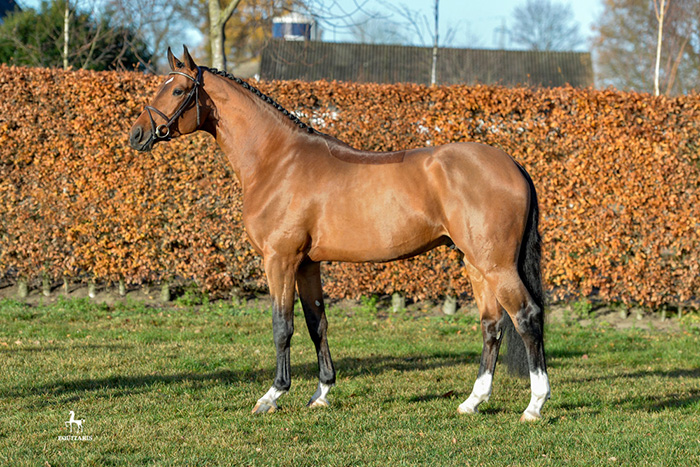
Comme le père
“Then I am looking forward to three young ones. An up-and-coming one, now in his second year, is Comme le père, by Comme il faut and then Contender, then Pilot – he’s a really good horse and the offspring from the first season, they look like very good models, good movers, jumping is too early to say, but I expect he will breed well.”

Mumbai
Then I have a new stallion, Mumbai by Diamant, then Nabab de Rêve, Chin Chin, and Quidam, so a lot of good bloodlines. He jumps really well, he is not a typical German mover stallion type in terms of rideability, but a powerful jumper. The third one is now six, Chubakko, by Conner, a son of Casall, and the mother is by Colman, which is also the father of Convall. I believe in these stallions.”
Were you surprised that Goldfever didn’t breed on?
“Ah, surprised, yes and no. He himself is a bit of a freak, an outstanding horse, no question, but…”
That G line has found it hard to produce stallions…
“And he has proven it.”
The take away?
“Of course there are problems here and there, but I wouldn’t be too pessimistic about our future.”
Ludger Beerbaum Photo Gallery
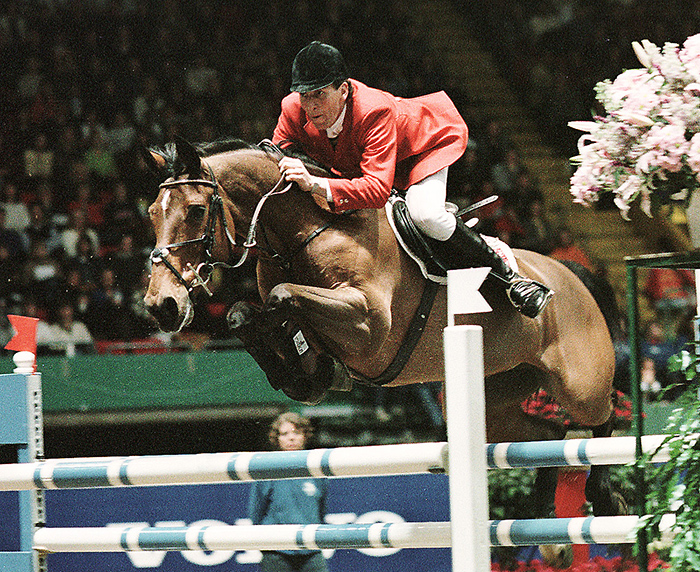
Ludger and Ratina at Göteborg in 2000
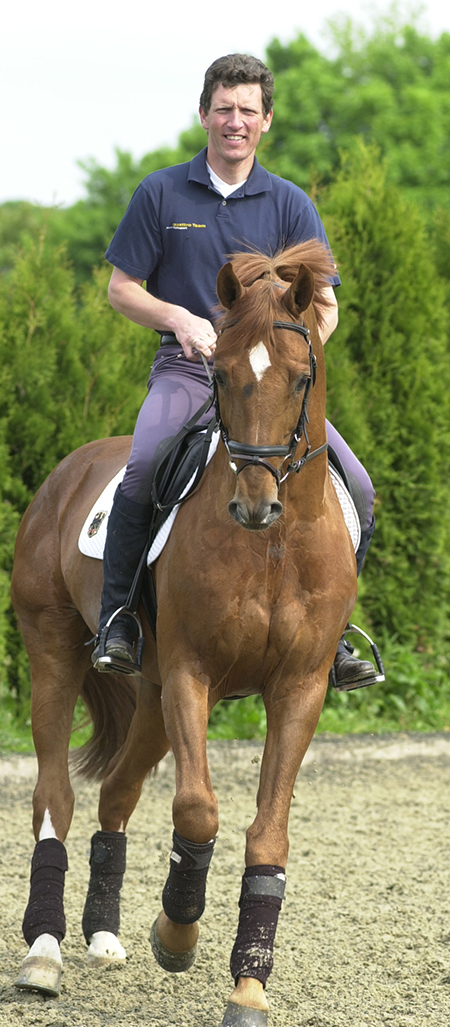
Working Goldfever at home in 2000
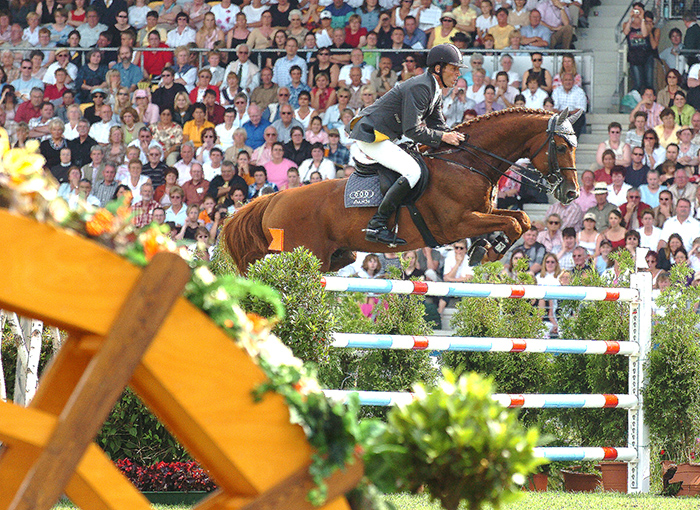
Goldfever at Aachen in 2004
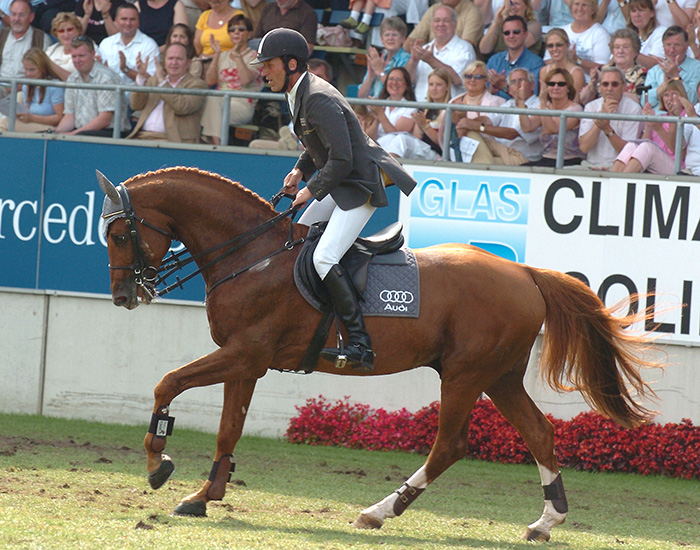
The German crowds applaud their hero
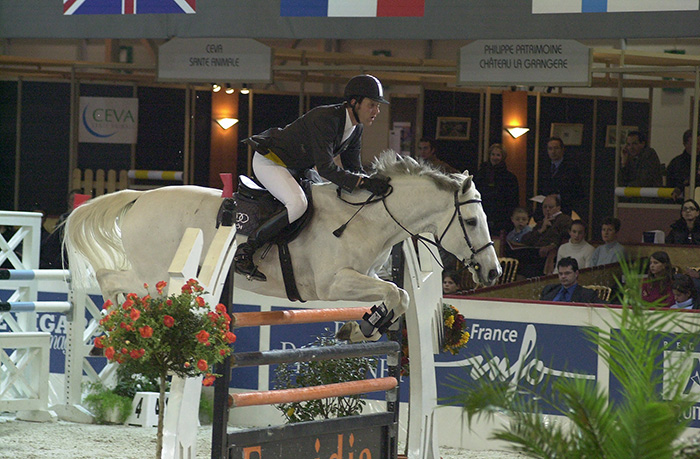
Champion du Lys a winner at Grand Prix level, competing at Bordeaux in 2002
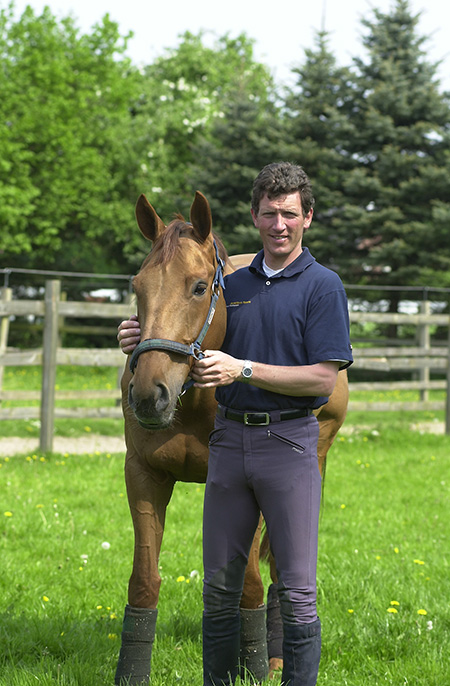
Gladdys at home in the field in 2001
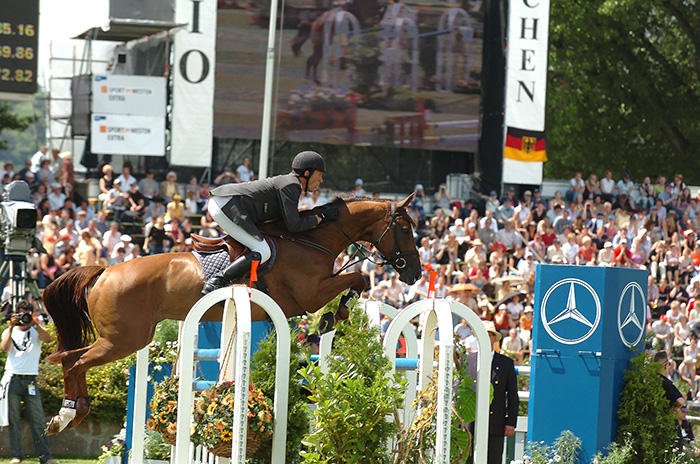
and competing in the Grand Prix of Aachen
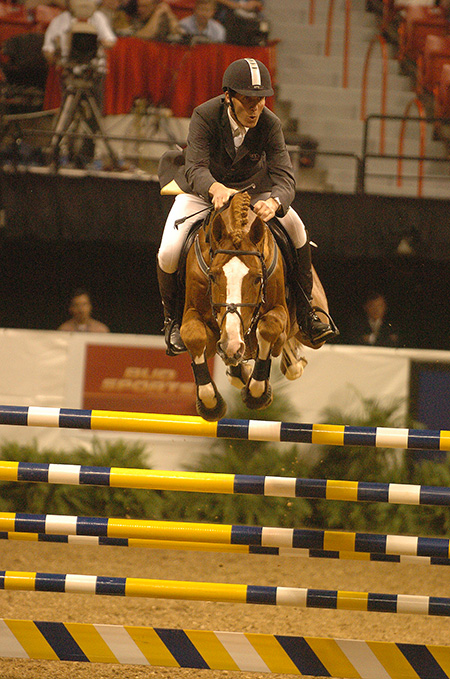
The stallion Couleur Rubin (Cordalme/Grannus) and Ludger in Las Vegas for the World Cup in 2005
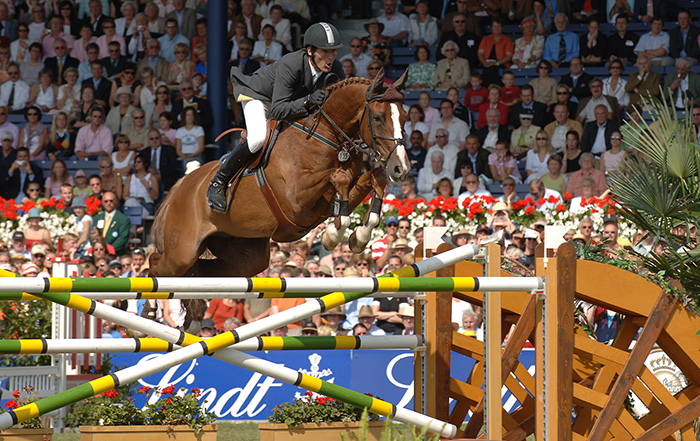
Espoir at Aachen in 2005
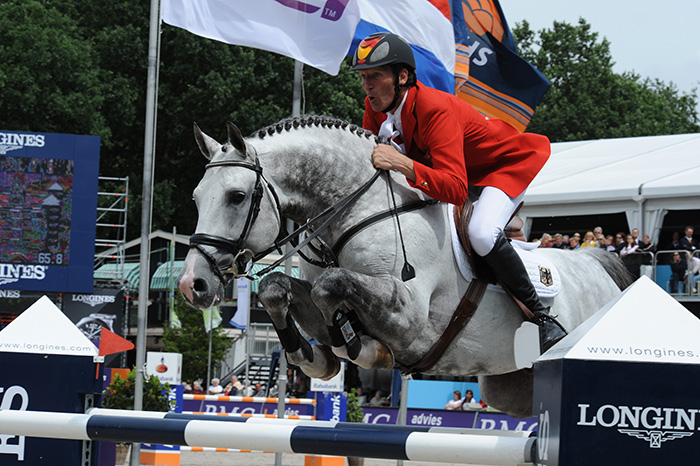
Coupe de Coeur at the Euros at Rotterdam in 2008
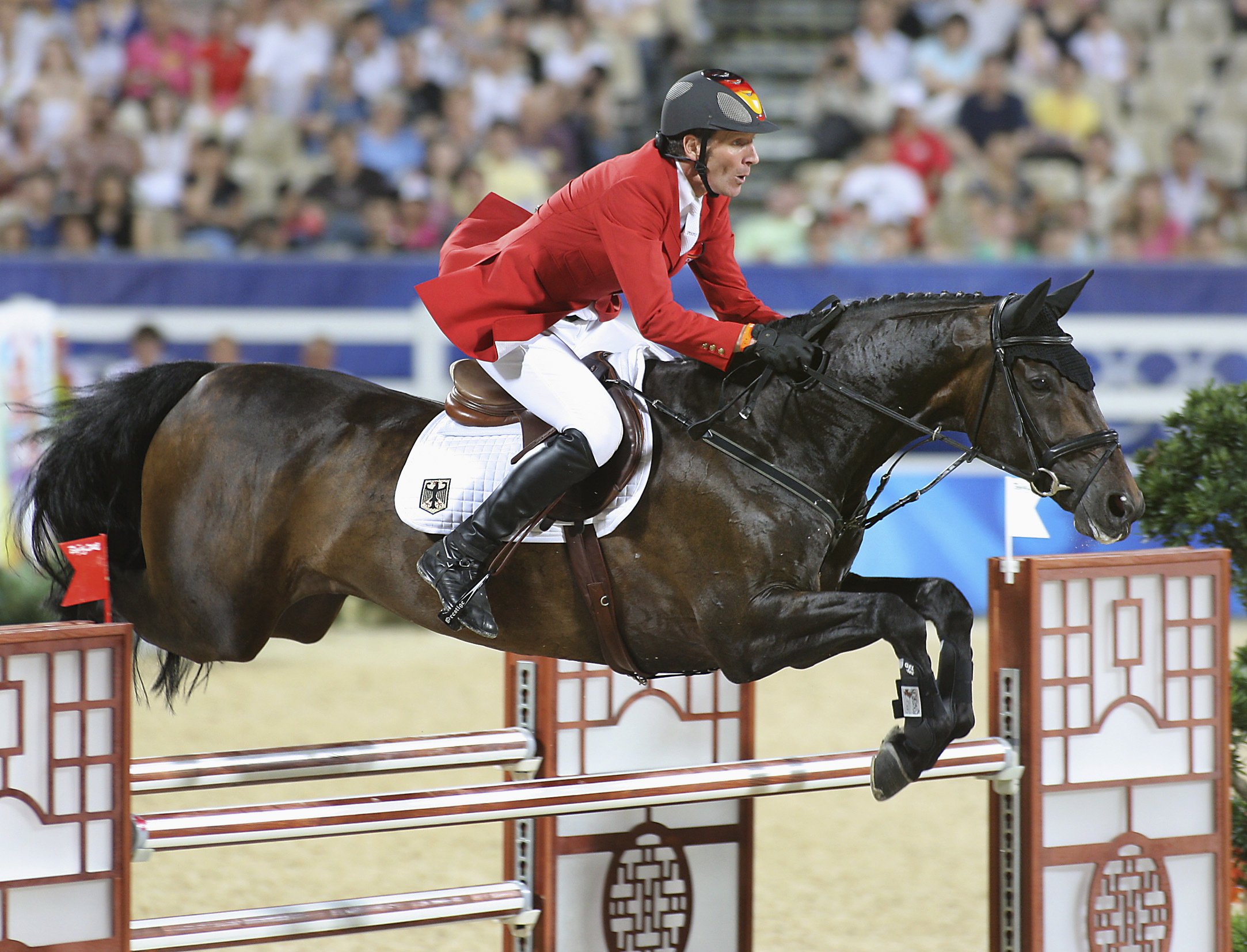
Hong Kong Games in 2008 with All Inclusive
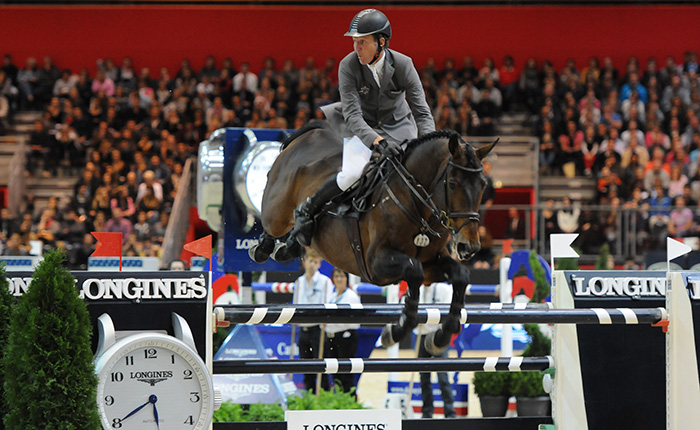
Equita Lyon in 2013 with Chaman
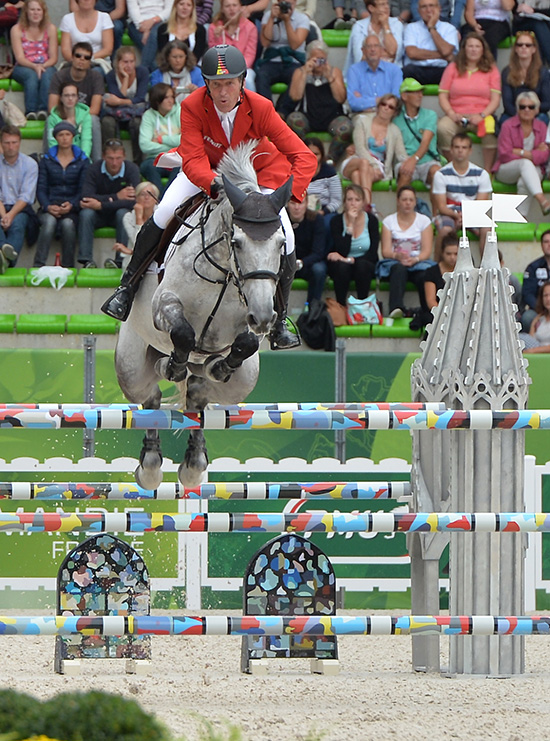
Ludger and Chiara at the 2014 WEG. A tribute to Ludger’s horsemanship the Chiara was his ride the the recent win at CHI Al Shaqab in Doha, the Contender daughter is still winning at the top level five years later…
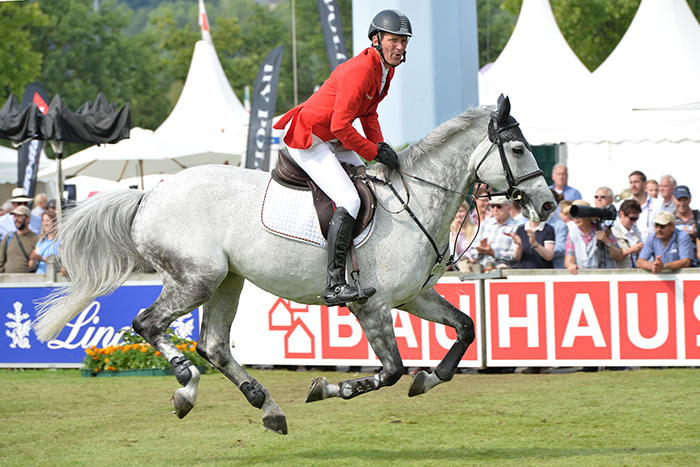
To finish, Ludger and Chiara preparing for a Grand Prix round at Aachen, and Ludger retires in 2023…

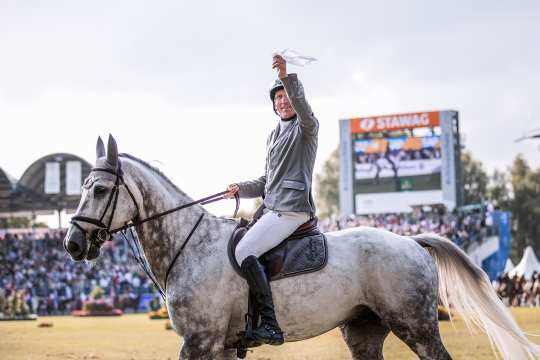
Thank you for a very interesting article.